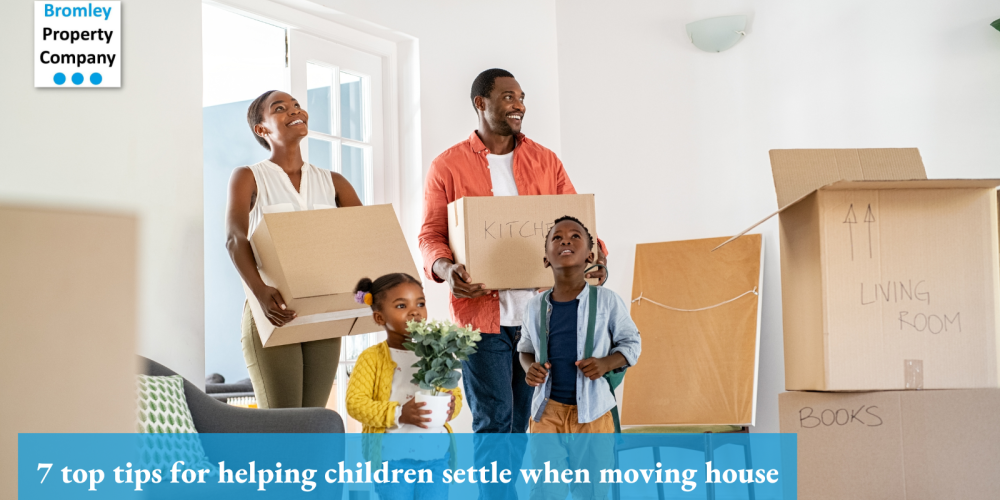
Moving to a new house can be an exciting yet overwhelming experience, especially for children. It can disrupt their routines and take them away from familiar surroundings, friends, and the comfort of their old home. However, with a little preparation and support from parents, children can adjust to their new environment smoothly. If you’re planning a move with children, here are seven top tips for helping them settle when moving house:
-
Involve Them in the Process: Children like to feel included and involved in decision-making. Before the move, discuss the reasons behind it and explain how it will benefit the whole family. Encourage them to express their opinions and listen to their concerns. Involving them in the planning, such as choosing a new paint color for their bedroom or helping with packing, can make them feel more connected to the new house.
-
Maintain a Routine: Children thrive on routines, and moving can disrupt their sense of stability. Try to maintain their usual routines as much as possible during the move to provide a sense of normalcy amidst the chaos. Stick to regular meal times, bathtimes, and bedtimes to ensure they feel secure and grounded during this transition.
-
Explore the New Neighbourhood: Prioritise familiarising your children with their new neighbourhood. Take them on a tour, pointing out nearby parks, schools, or any other places of interest. Going for walks or bike rides in the area can help them feel more connected to their surroundings. Encouraging them to make new friends by visiting local playgrounds or joining community activities can also aid in their settlement. Finding some fun things to do with kids in the London area can really help when it comes to settling in and creating a positive association with your new neighbourhood.
-
Unpack Their Belongings First: Upon arrival at the new house, make unpacking your children’s belongings a priority. Their familiar toys, books, and bedding can provide a sense of comfort amidst the unfamiliarity. Having their room set up and personalised will help them feel more at home and give them a safe haven to retreat to during the adjustment period.
-
Create a Familiar Space: Maintain some elements of familiarity in their new room. Use the same bedding and arrange furniture in a similar layout if possible. Hanging familiar pictures or posters on the wall can also help create a sense of continuity and reassurance. Additionally, consider letting them choose a new decoration or item to make it feel more like their own special space.
-
Get to Know the New School: If changing schools is part of the move, help your children transition smoothly by arranging a visit to their new school before the first day. Introduce them to teachers, show them around the classrooms, and let them meet their future classmates if possible. Familiarity with the school environment can alleviate some anxieties associated with the move.
-
Communication and Emotional Support: Moving can be an emotional roller coaster for children, so ensure an open line of communication. Encourage them to express their feelings, whether it’s excitement, sadness, or nervousness. Validate their emotions and provide reassurance that it’s normal to feel this way. Be patient and understanding, offering comfort and support whenever needed.
Moving house doesn’t have to be a stressful experience for children. By helping children settle when moving house, involving them in the process, maintaining routines, exploring the new neighbourhood, creating a familiar space, and providing emotional support, you can help your children settle into their new home with ease. With time and patience, they’ll soon see the excitement and opportunities that come with this new chapter in their lives.
Read more our news and blog posts HERE

